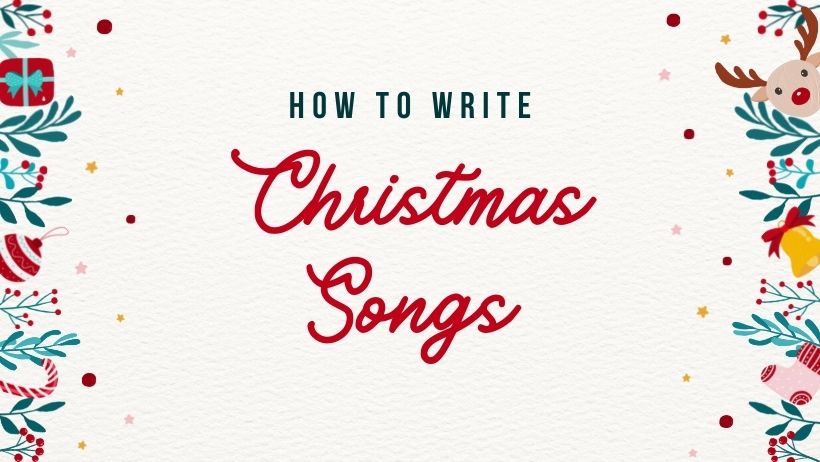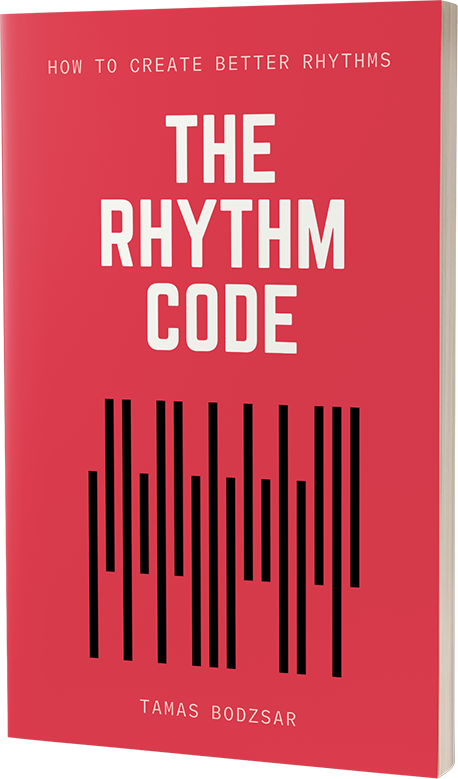
I wanted to write an article about this a little bit earlier, but it’s still not too late to write a Christmas song and publish it before this year’s holiday. Christmas songs are in a special category in music, and it’s a very divisive topic because many artists don’t really like Christmas songs. This is probably due to the fact that Christmas songs can be really cheesy and corny. But I do believe that it’s possible to write good Christmas songs, so let’s see what are the most common features of a Christmas song.
Key
If you want to write a Christmas song, it’s better to utilize the “happiness” factor of major chords and keys. We all know that a major chord evokes happy feelings and a minor chord evokes sadness. And Christmas is the time when people want to listen to happy songs. But it doesn’t mean that you only need to use major chords. It’s usually better to use both major and minor chords, however, there are two things that help determine the mood of the song. First, the song has to start with a major chord. And secondly, the melody has to end on the major tonic.
For example, the song “All I Want For Christmas Is You” by Mariah Carey starts with the chord G-major and the melody ends on the note G. Another example is the song “Santa Tell Me” by Ariana Grande. This song also starts with the chord G-major and the melody ends on the note G which is the tonic. The song “I’ll Be Home” by Meghan Trainor starts with the chord D-major, and the melody ends on the note D, the tonic. The song “Text Me Merry Christmas” by Straight No Chaser also starts with the tonic G-major chords, and the melody ends on the note G.
Chord progression
There is a reason why there aren’t many new Christmas songs. When it comes to Christmas, people like to be nostalgic. This means, listening to songs that they have listened to for decades (even if those songs are really crappy). That’s why most artists play safe with Christmas songs: they only record a cover version of a well-known song.
But what if we want to write a completely original, new Christmas song? We need to go back in time and use the tools they used in classic Christmas songs. And if you listen to any new Christmas song, you can notice that they sound very similar to those oldies.
One of the ways we can go back in time is if we use jazzy chords. It doesn’t mean you have to overcomplicate the chord progression as you would do in a jazz song. It only means that you need to use seventh chords instead of triads. Most of the new Christmas songs utilize this concept. For example, here is the chord progression of the song “Santa Tell Me“.
G – Gmaj7 – G7 – Cmaj7
I – Imaj7 – I7 – IVmaj7
But it’s not just seventh chords that make a song a little bit jazzy. Utilizing the IIm – V cadence also helps because this cadence is mostly used in jazz. For example, the song “Baby! It’s Christmas” by Jessie James Decker has a chord progression that includes this cadence:
C – C/E – F – G
I – I/3 – IV – G
C – C/E – F – G
I – I/3 – IV – G
Am – Em – Dm – G
VIm – IIIm – IIm – V
Lyrics
As I mentioned, many people ruin their Christmas songs by making them too cheesy and corny. The lyrics are the part where you can mess up the whole song. It’s OK to use patterns or clichés in a Christmas song. But these things are very similar to sugar. You can put sugar in almost any food, even if it’s salty. And it will make the food taste better. But imagine a cook that is using too much sugar in every food he cooks. Sure, it may taste relatively better, but you will be sick after eating his food because all of his food is very sugary. A similar effect happens if a songwriter uses too much cliché in their song. Remember the pop songs from the 90s? There is a reason people hate that era. It was fun for a while but people got sick because of too much “sugar”.
So what are the clichés in Christmas songs? Obviously, lyrics that contain “Christmas”, “mistletoe”, “Christmas tree”, “Santa”, and things like that. Anything connected to Christmas. Lyrics that are only about Christmas and nothing else, and “being together happily” are too cheesy. It’s OK to use SOME of the words that refer to Christmas, in fact, including at least one of these words is the only thing that will make your song a Christmas song. But the main message of the song can be anything else but Christmas.
In fact, the lyrics of the absolutely most popular Christmas song “All I Want For Christmas Is You” by Mariah Carey are not particularly about Christmas but it’s a love song. “Santa Tell Me” by Ariana Grande is also not only about Christmas but it’s a love song.
Arrangement
The arrangement of the song can be another tool to go back in time. Today there are not many songs that use acoustic instruments, especially in popular genres. But classic Christmas songs always used them in the past. So using acoustic instrumentation for your Christmas song can bring a nostalgic feel for the listener.
What instruments can you use? Most of the time the instrument that plays the chords in Christmas songs is an acoustic piano. But using an acoustic guitar is also an option – for example, they use an acoustic guitar in the song “Mistletoe” by Justin Bieber.
But there are two instruments that definitely make the distinctive Christmassy sound. A jingle bell or sleigh bell, and the other one is the vibraphone. You can use these percussive instruments in your song even if you don’t know how to play them and you can’t access one. Today there are many acoustic sound samples that we can use when we produce music. These are not synth sounds but they actually record these instruments in a music studio so they sound exactly how they should.
Conclusion
Many musicians don’t like Christmas songs because of the clichés but there is actually a way to write a Christmas song that doesn’t utilize too many clichés. The most important part is the lyrics where you should use too much “sugar” in your recipe. And because people want to feel nostalgic, you need to use songwriting tools from the past like jazzy chord progressions and acoustic instrumentation.
The secret pattern behind successful songs
Get the eBook for $4.99

